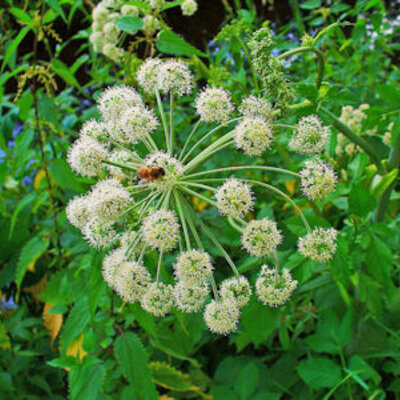
Officinalis - Angelique
This biennial or tri-annual species can reach over 2 m in height when in full bloom. It has large, sharply divided leaves and umbels of numerous small, greenish flowers.
Stems and petioles are used to make pastries and confectionery. The leaves can be eaten as a condiment. Traditionally, every part of the plant was used for therapeutic purposes.
in the ground, in bucket
Sow directly in place, in stacks of 2 to 3 seeds. Press lightly, keep moist until emergence, then thin out to keep a single plant. You can also sow in a bucket, under cover. To facilitate germination, store seeds in a moist substrate in the refrigerator for two periods of 60-90 days, interspersed with 60-90 days of warm storage (at 25-30°C). Monitor regularly and plant if germination begins.
At the end of the season, prune fairly short. Angelica disappears completely in winter and comes back early in spring.
March, April, July, August, September
March, April, July, August, September
April, May, June, July, August, September
in the ground
sunny, semi-shade
fort
humus, limestone
drained, fees, light
Angelica archangelica
late
100 seeds
Green, White
From 200 to 220 cm
cut
Eurasia
1883
"Vilmorin-Andrieux "Les Plantes Potagères
This species grows wild in Northern Europe (Scandinavia, as far as Lapland), Eastern Europe (Russia), locally in Central Europe (Germany, Poland), but also in Iceland, Greenland, Siberia and the Himalayas. It is mentioned in Vilmorin-Andrieux's 1883 book "Les Plantes Potagères".
The roots, used in Chinese medicine, are harvested in autumn, then washed and air-dried. They are then slit lengthwise to speed drying. The stems and petioles are also used to make pastries and confectionery, and the leaves can be eaten as a condiment. They are used fresh, but can also be frozen.






